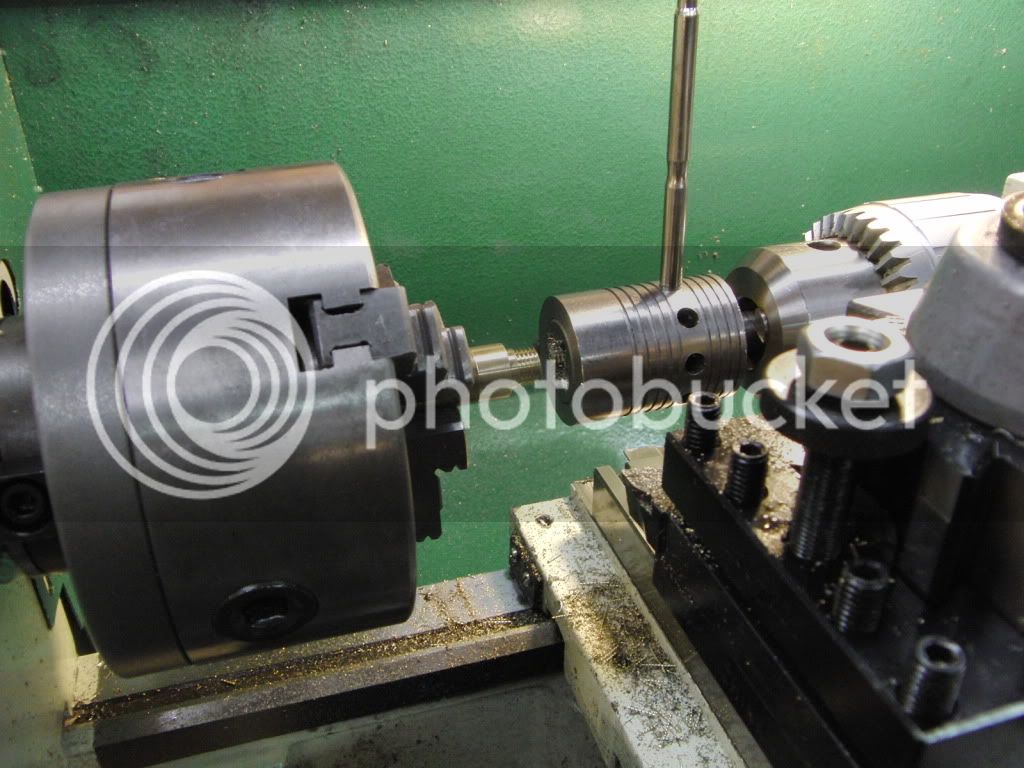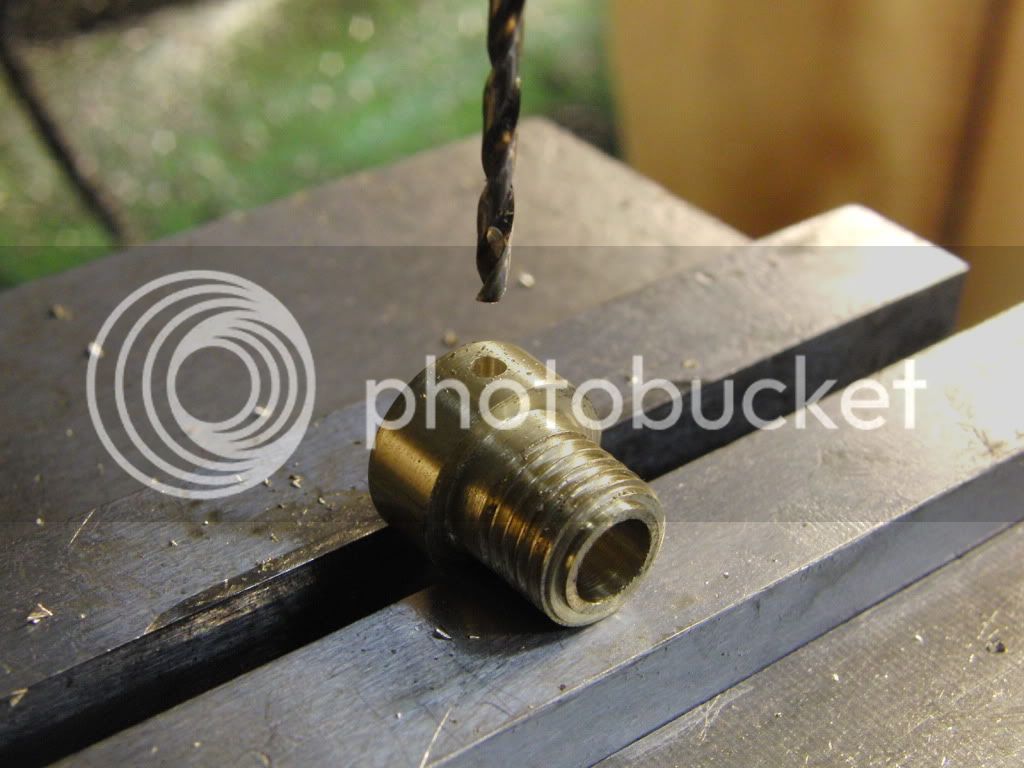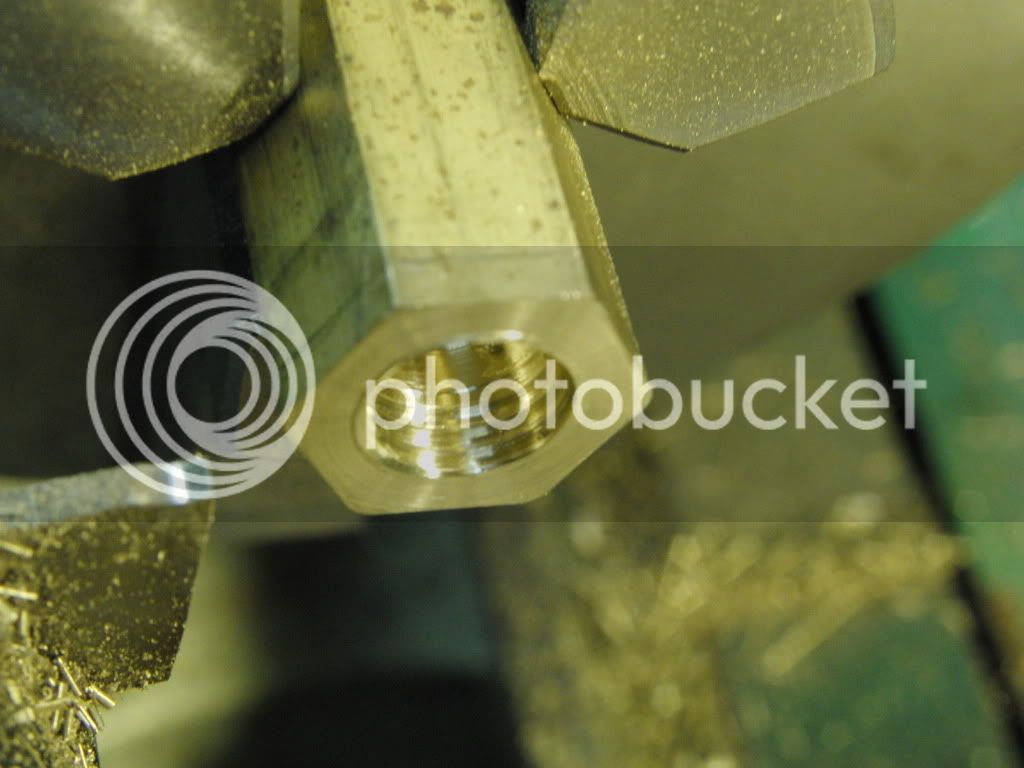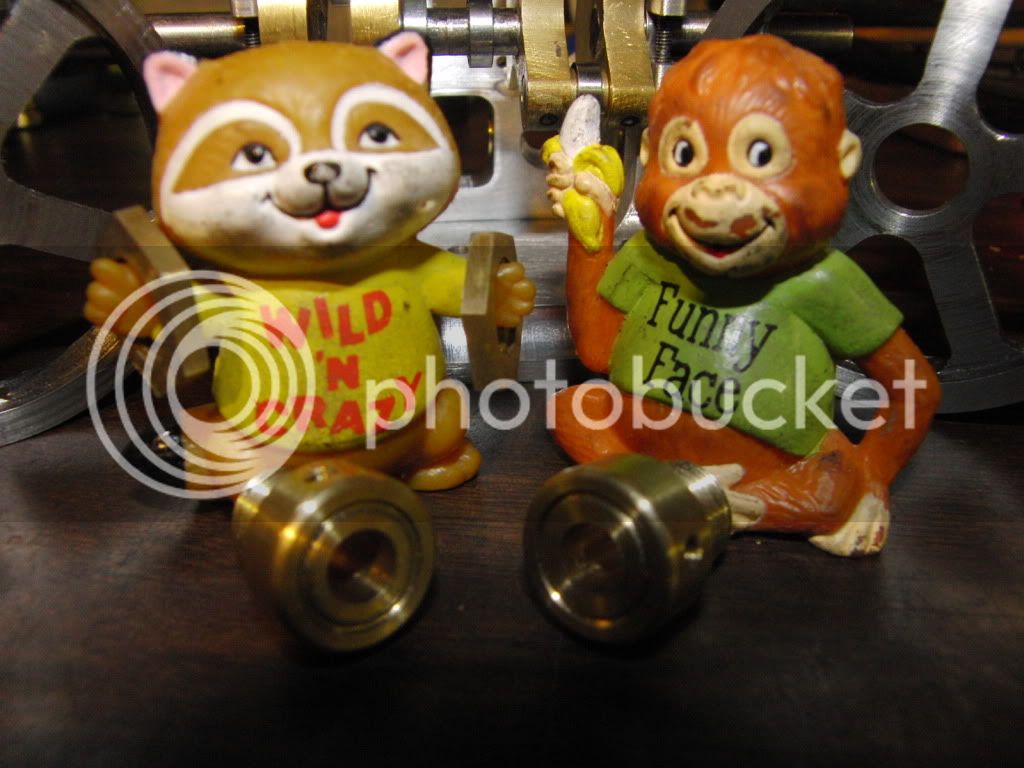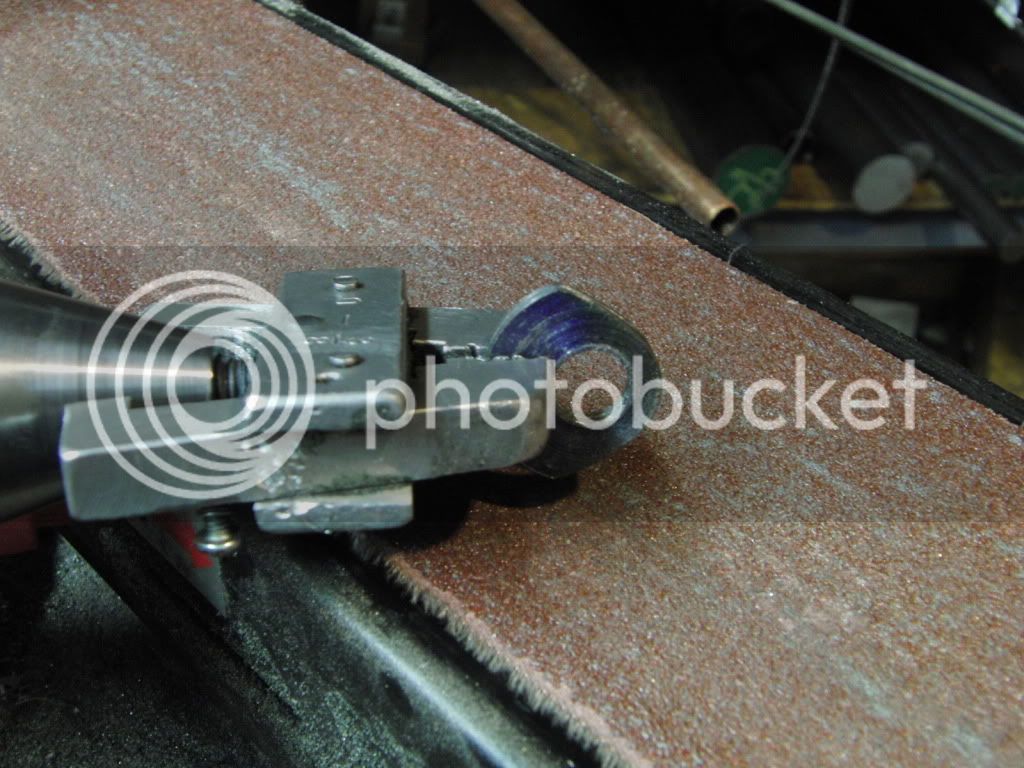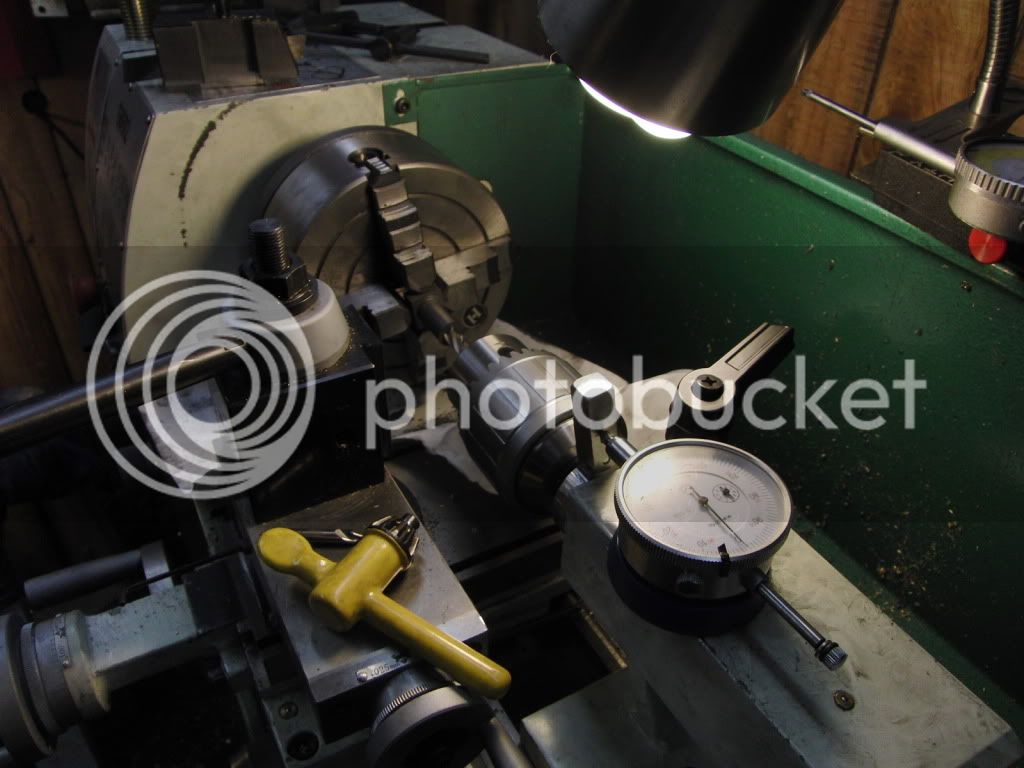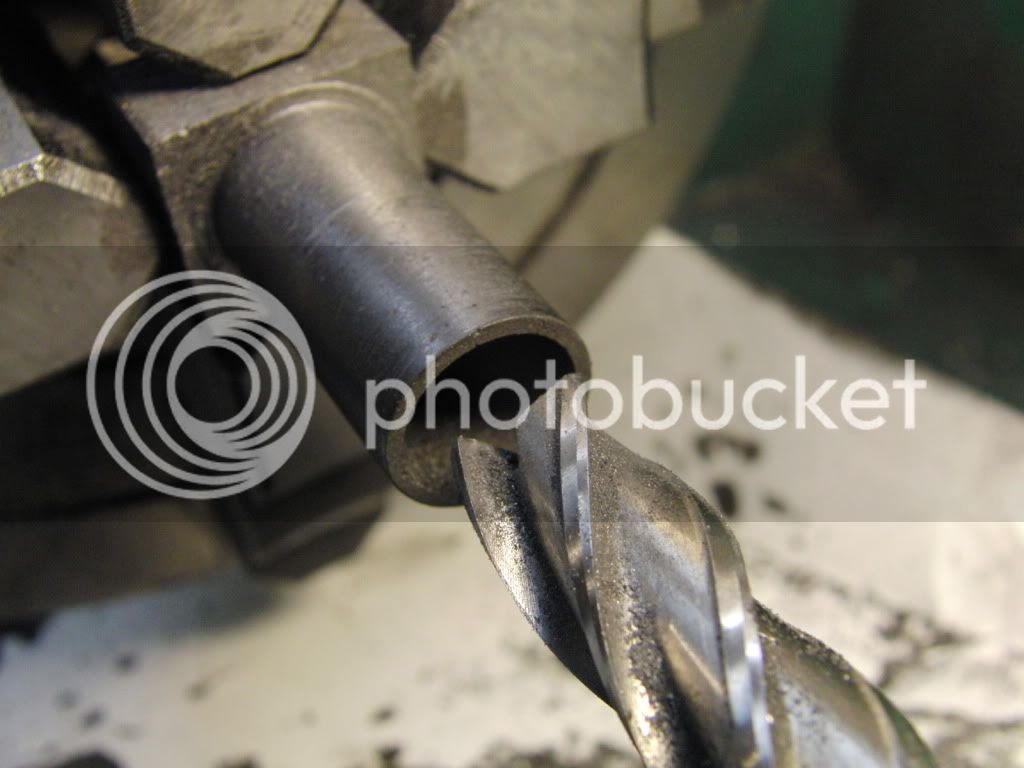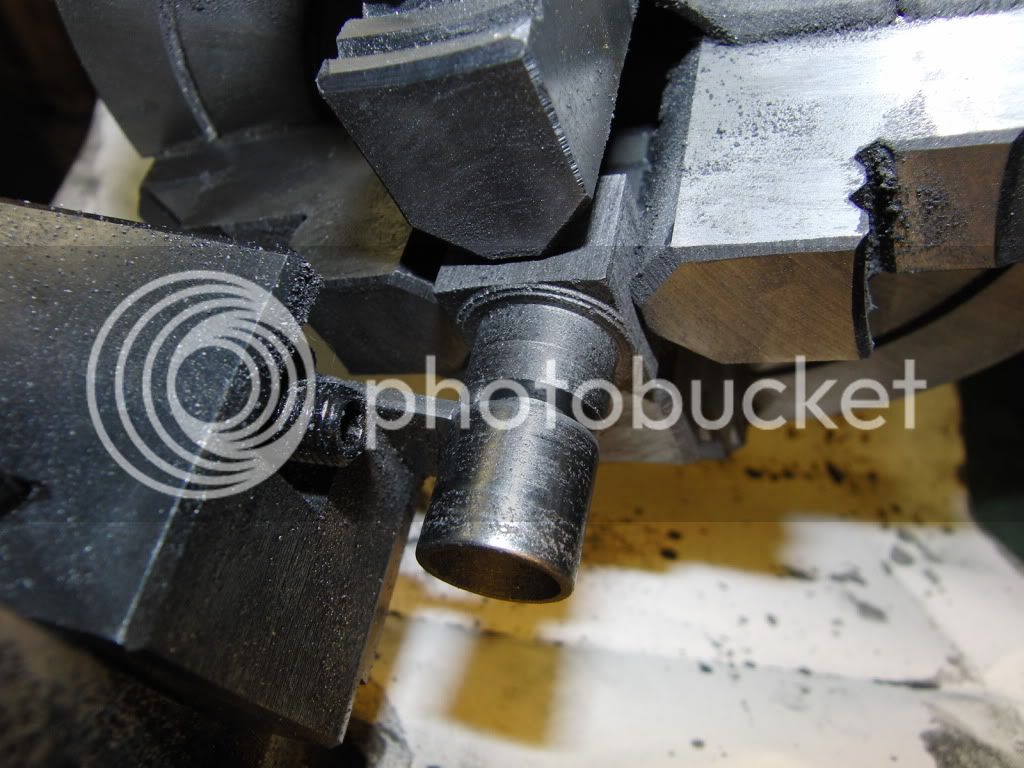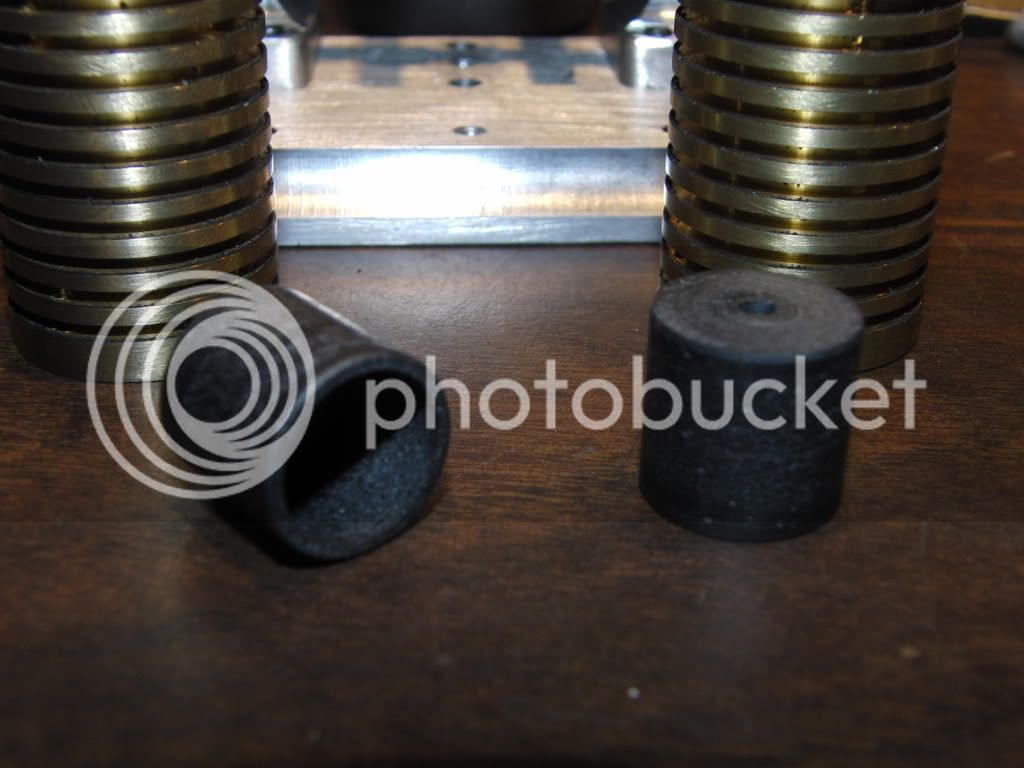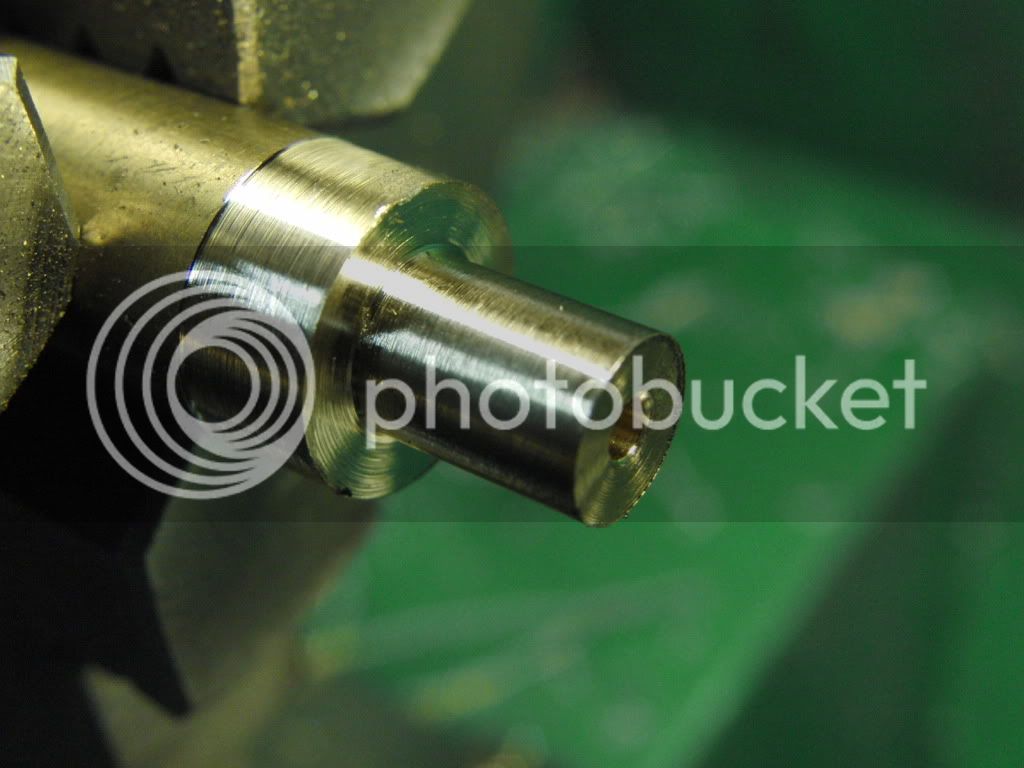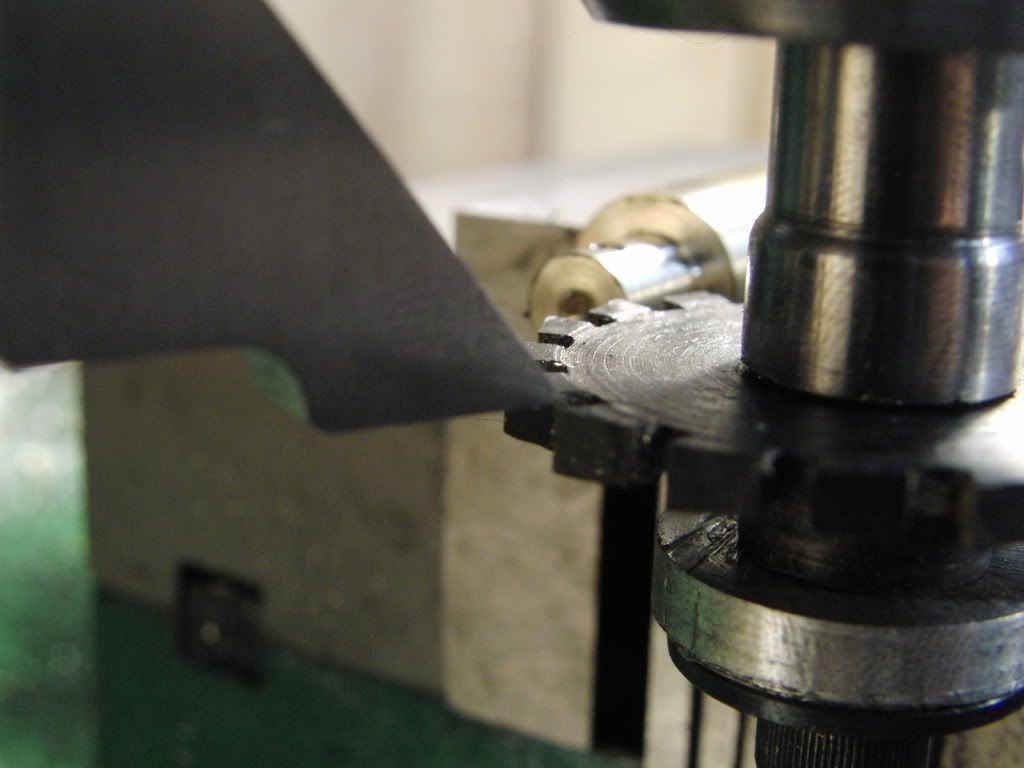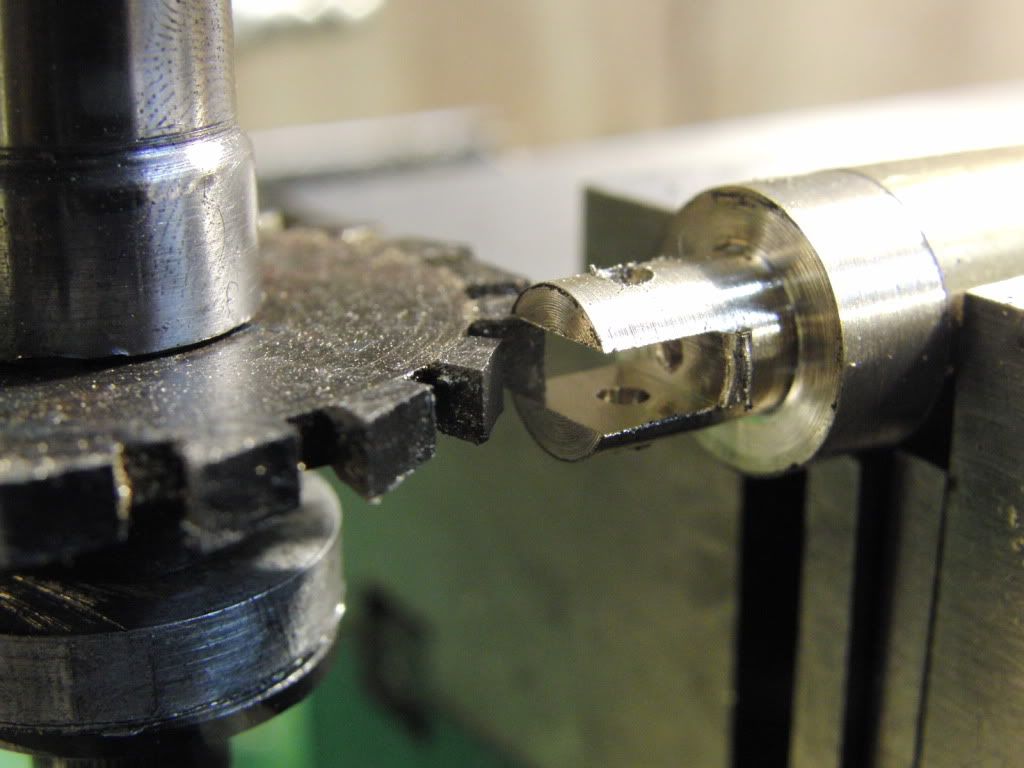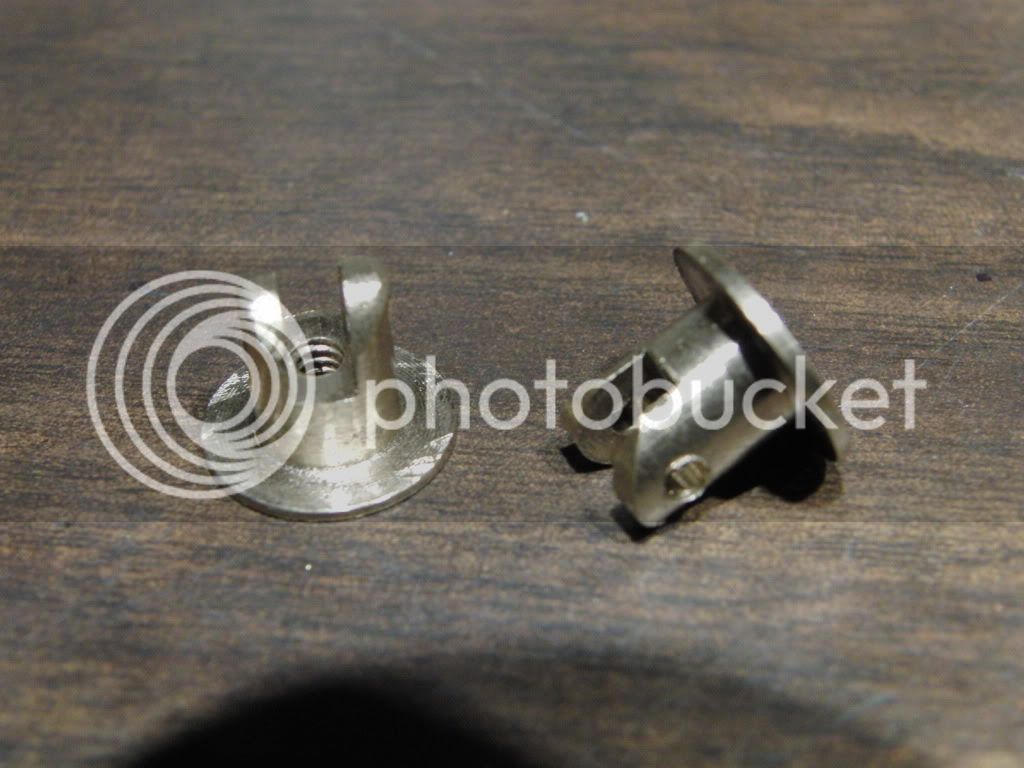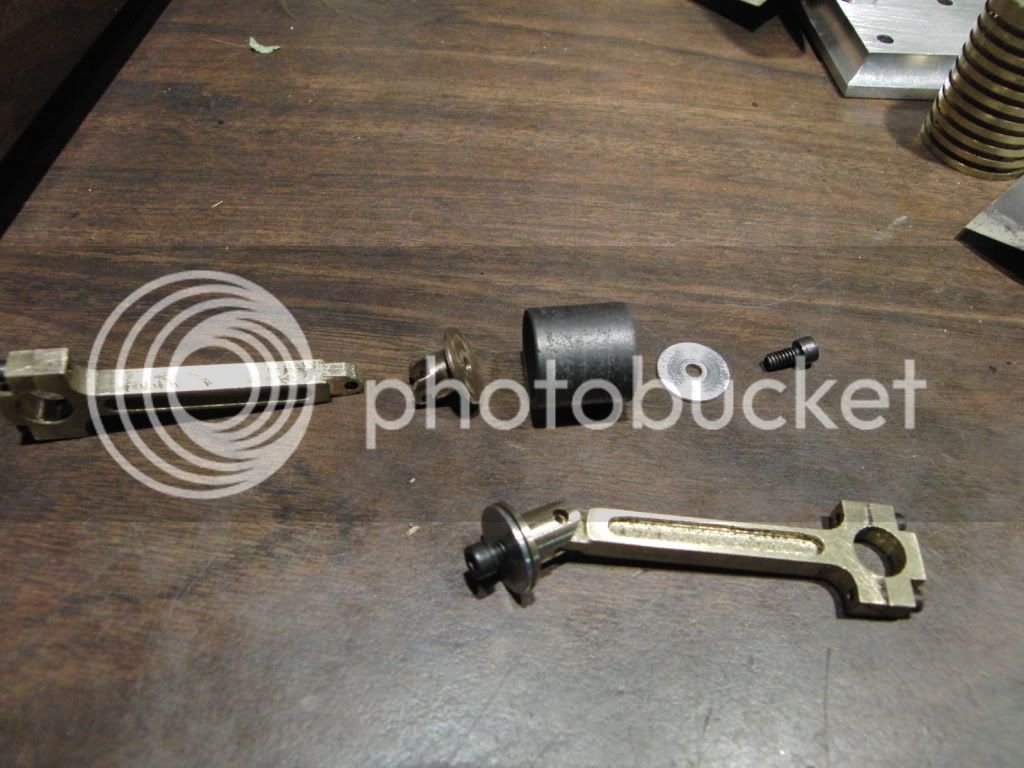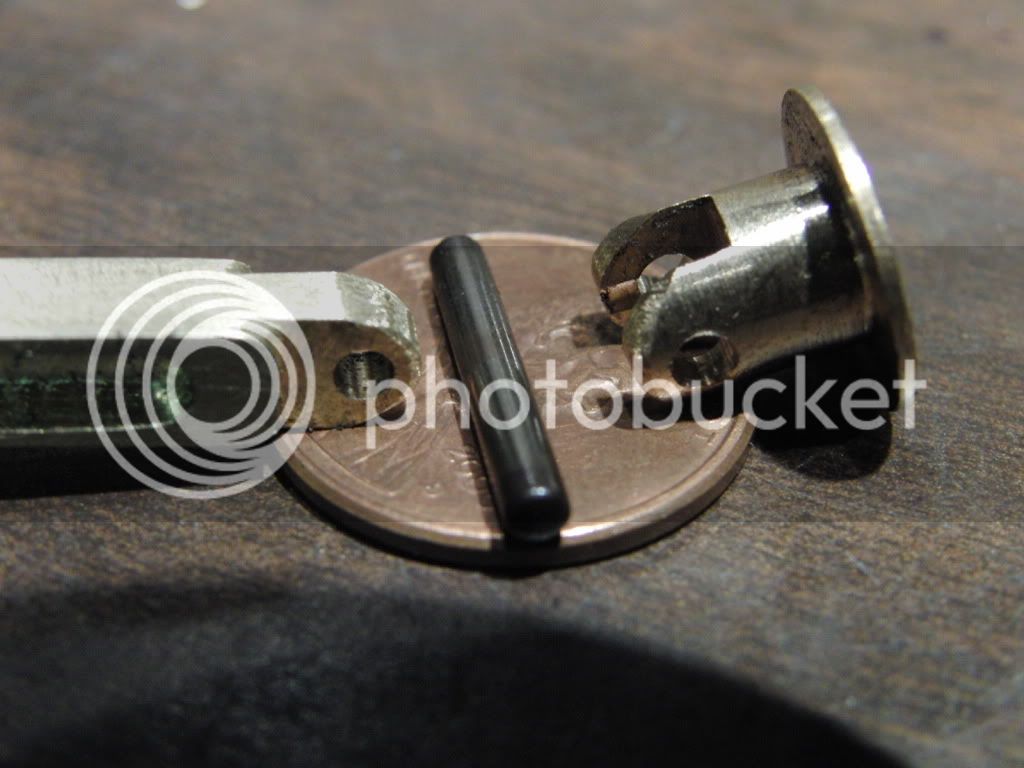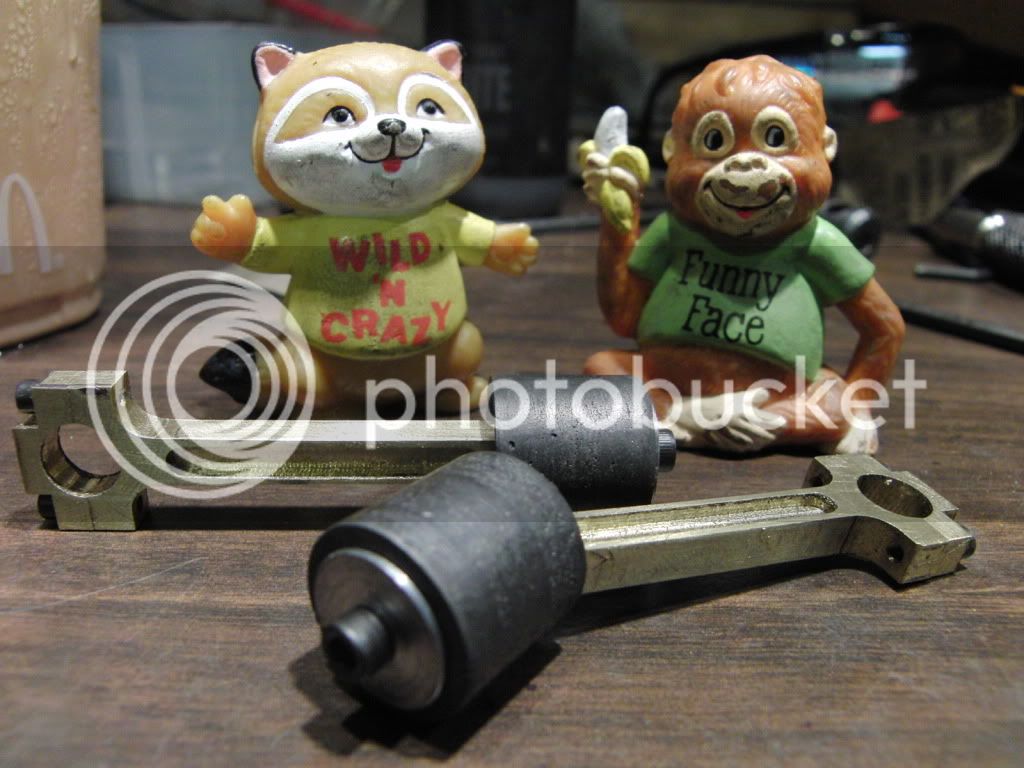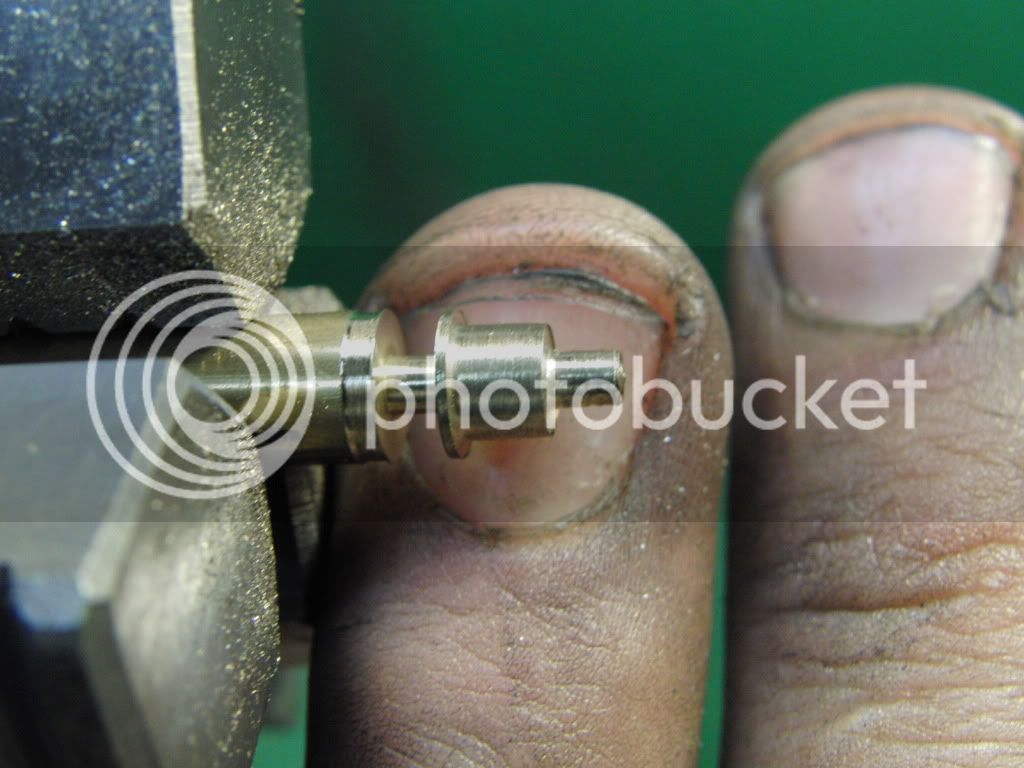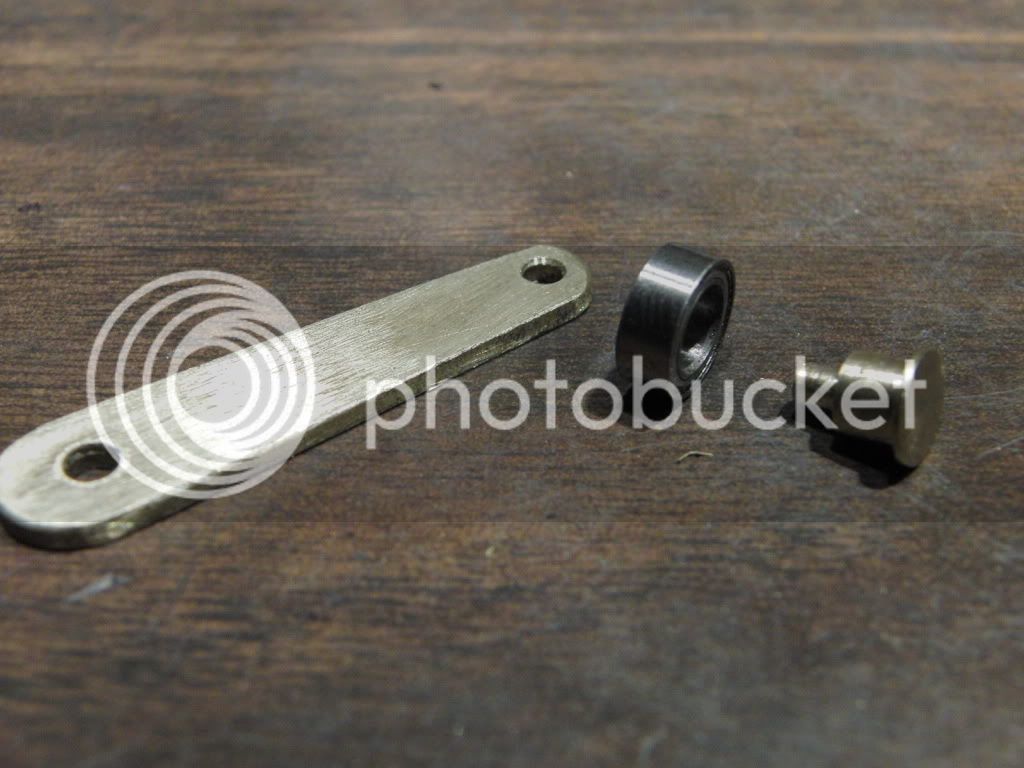- Joined
- Jan 19, 2010
- Messages
- 1,193
- Reaction score
- 41
I got quite a bit done today.
Here are the connecting rods. I came up with a more standard design, rather than the design in the plans.
After I drilled and tapped the holes in the blank I centered it on the edge of the main bar with the cap off of it. This makes sure the center is perfectly aligned before drilling.
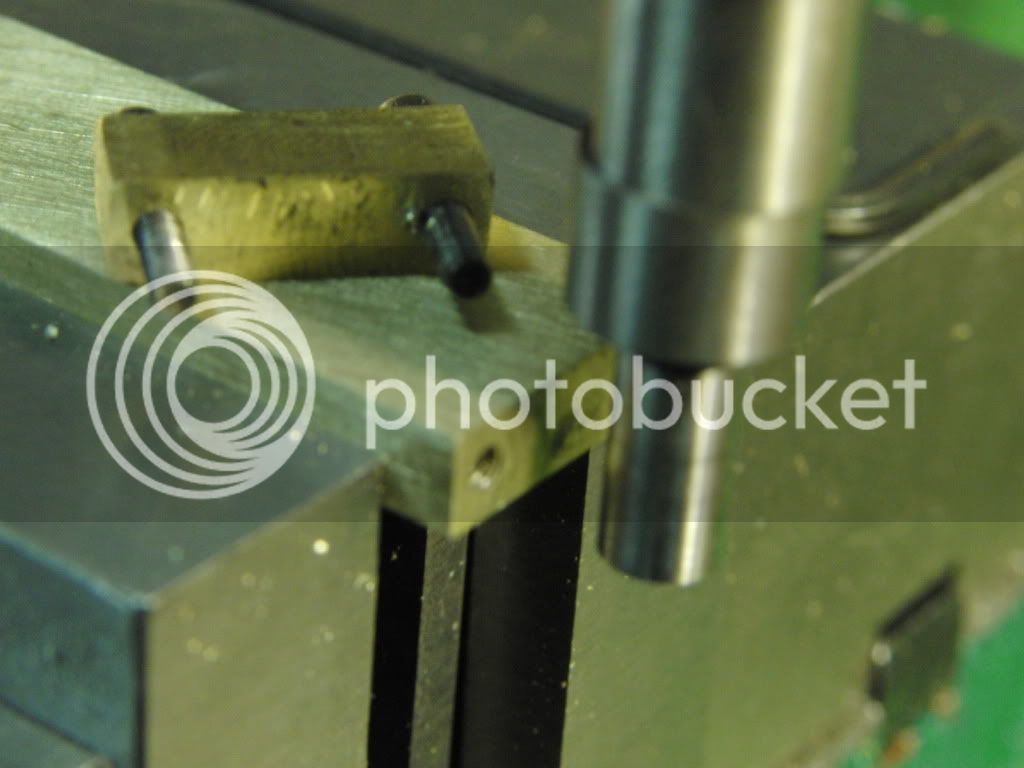
Then drilled the holes.
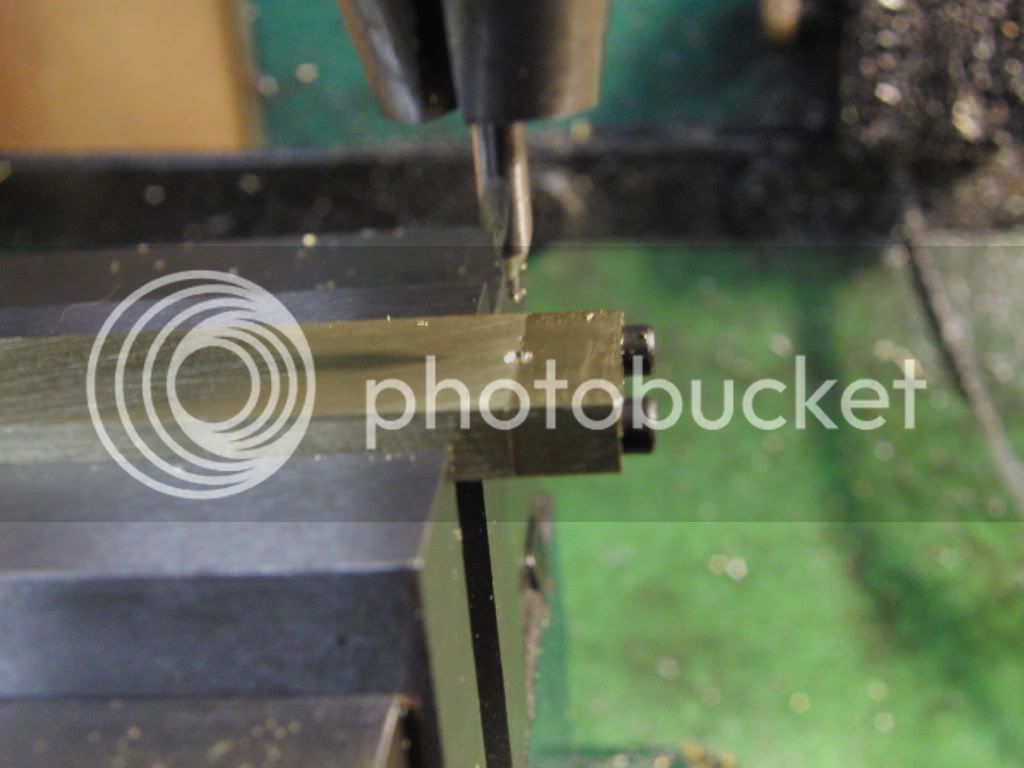
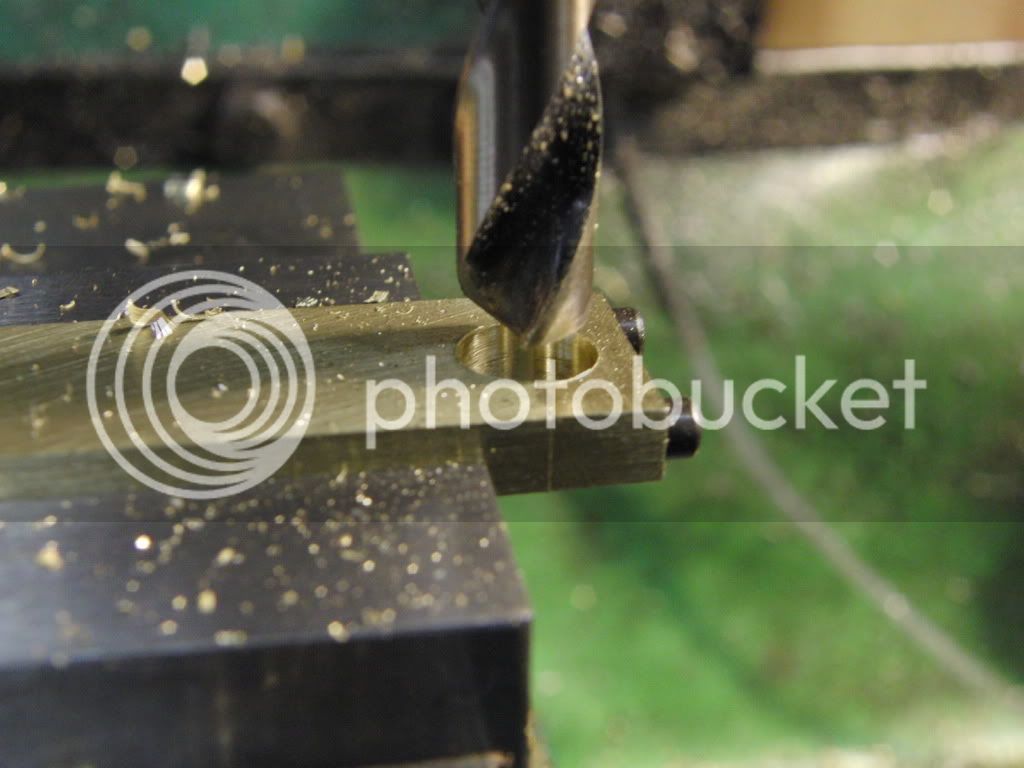
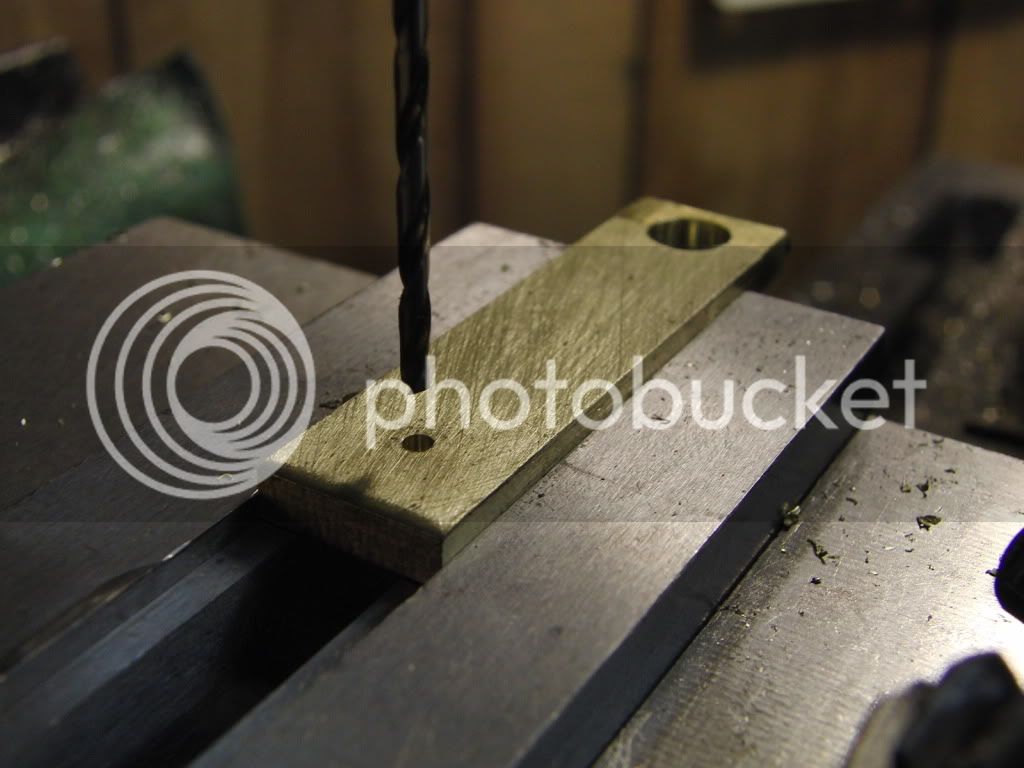
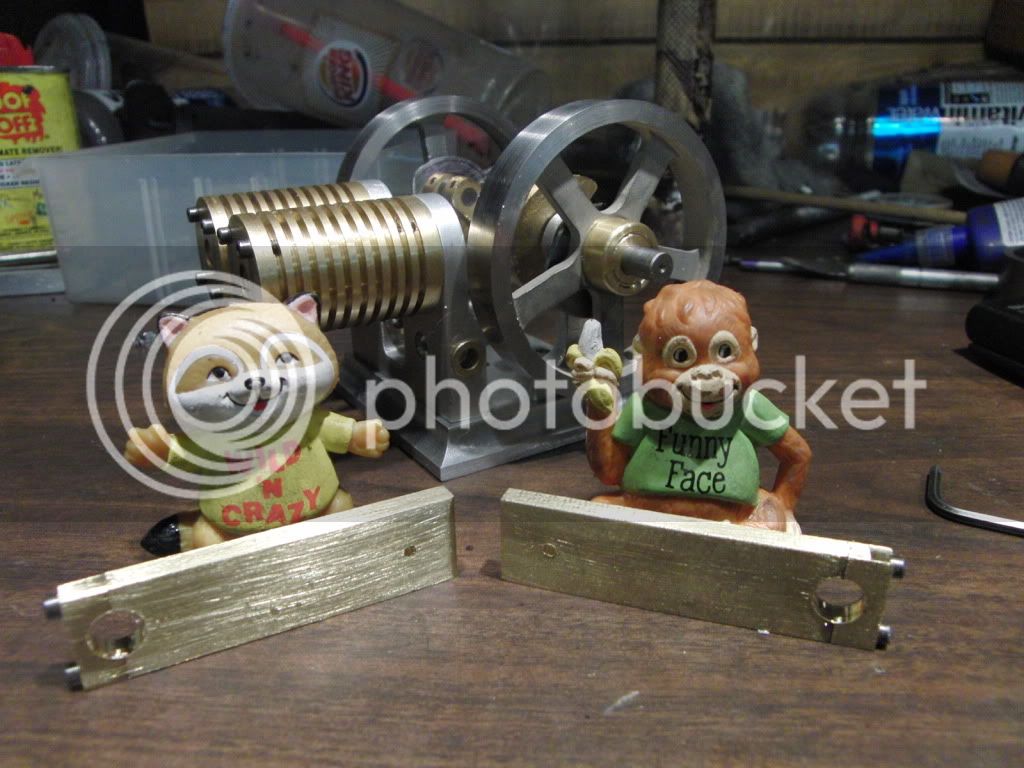
Now it is time to make the profile. I started by marking out all the lines with layout fluid. The eyeball is good enough for tis step.
The first milling step will be to mill out the recess in the middle of the rod.
I am using a 1/8" end mill for this with a .010 depth of cut 6 times across to get it 1/16" deep.
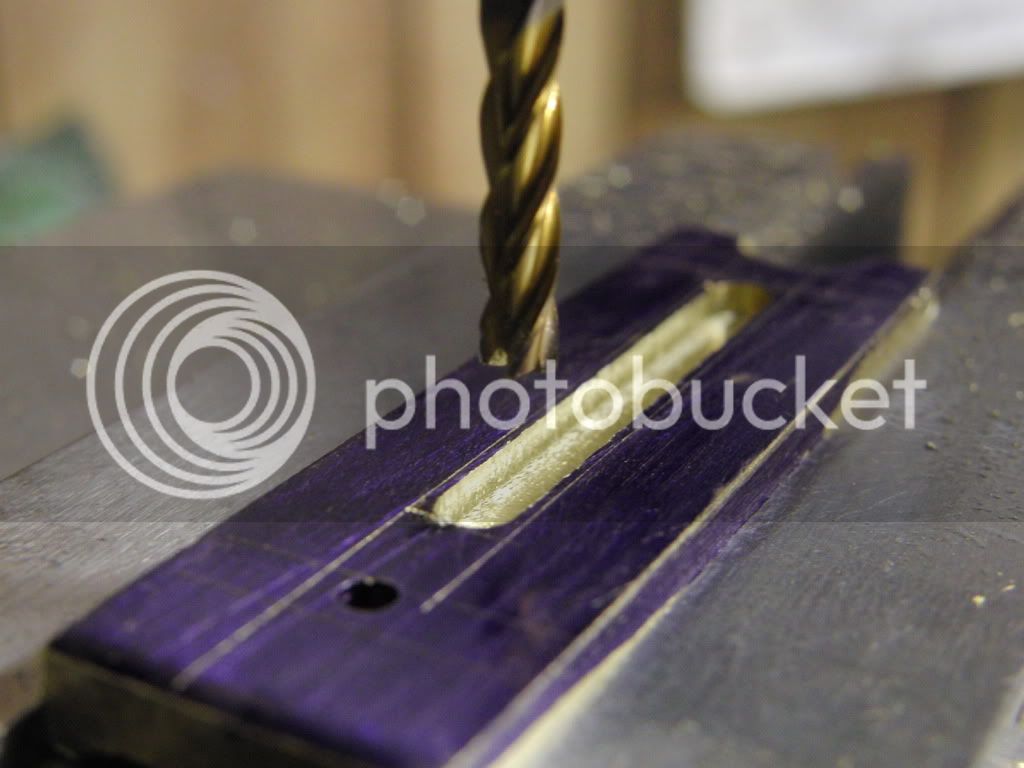
Then I proceded to mill out the sides. I am leaving a bit on the end so I can keep it parrellel in the vise when I flip it over.
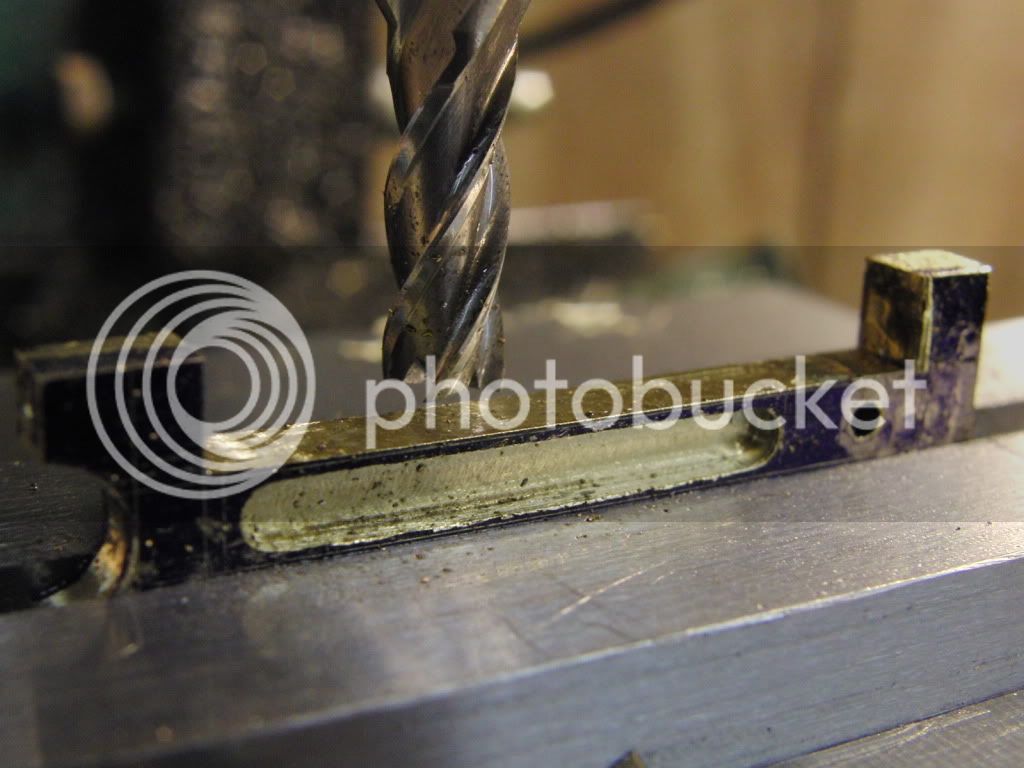
Then using a 1/4 ball end mill I made the fancy radius on the cap end.
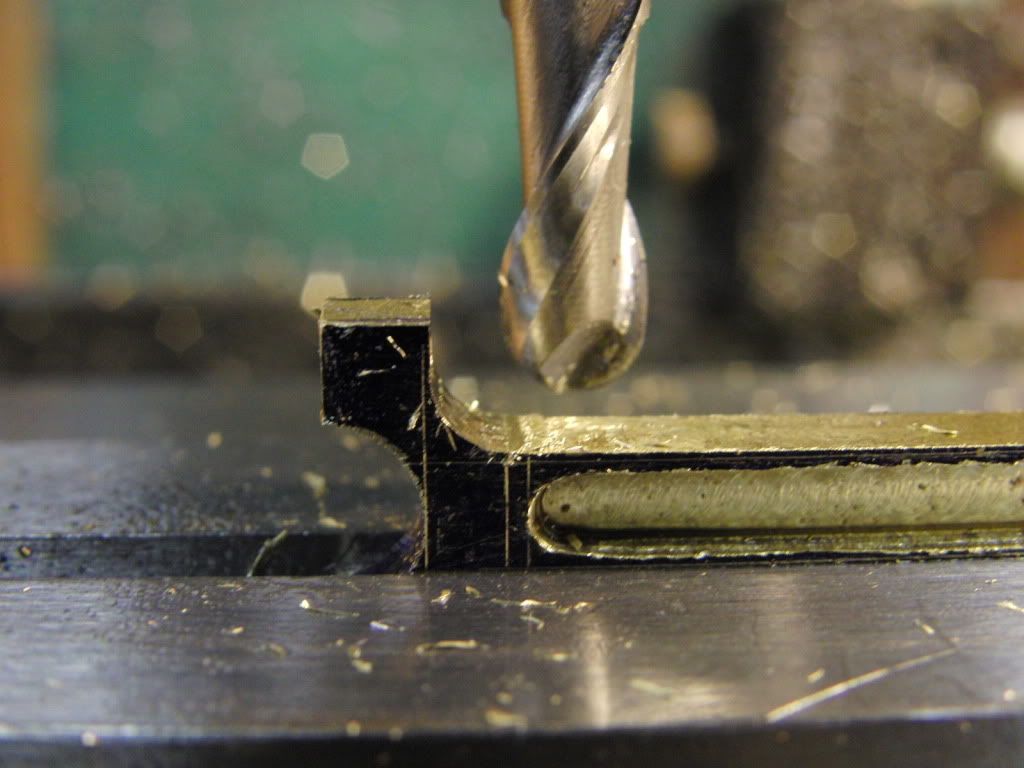
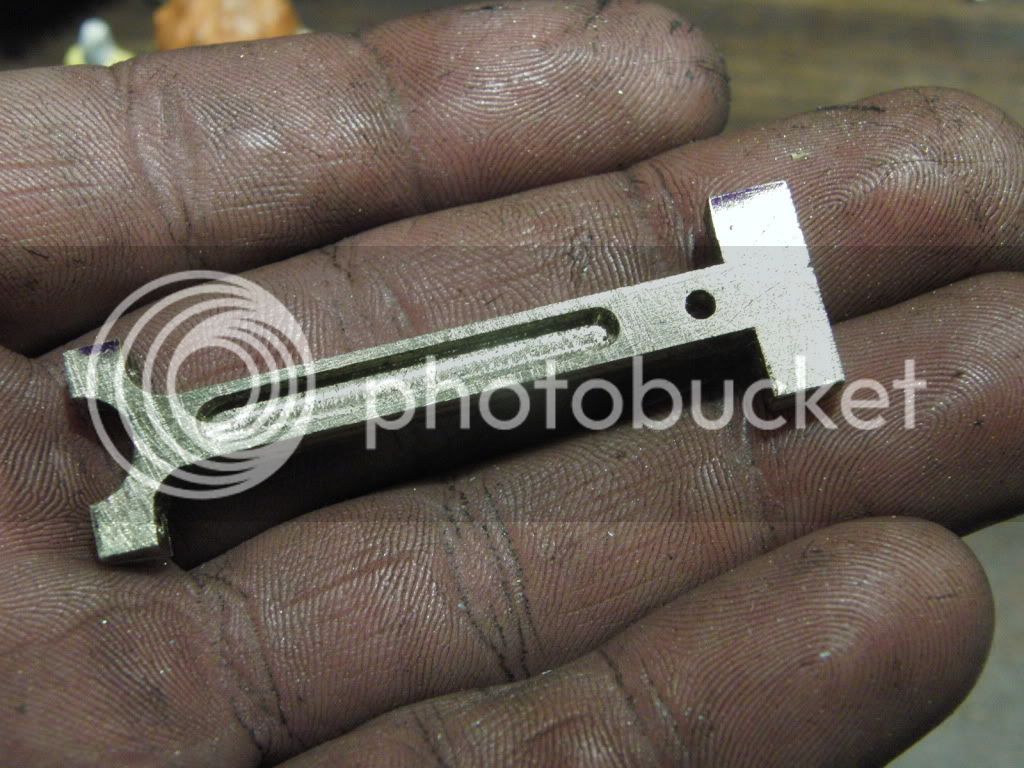
I then took the caps and milled down where the screw heads go.
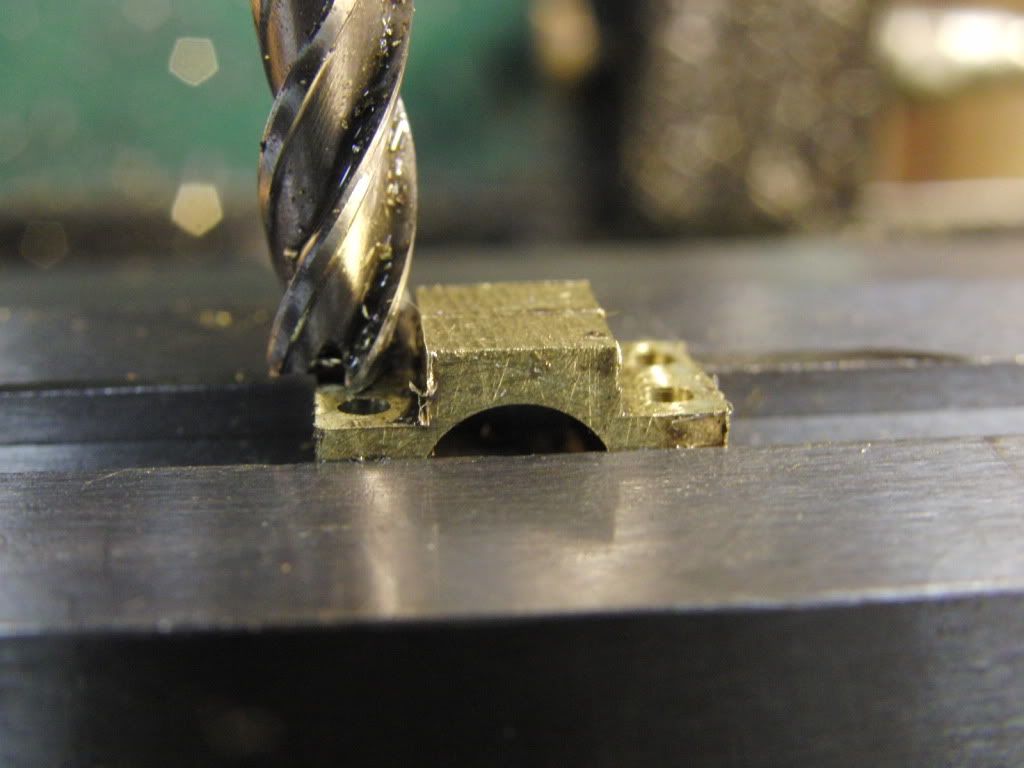
and here they are after cutting the ends off.
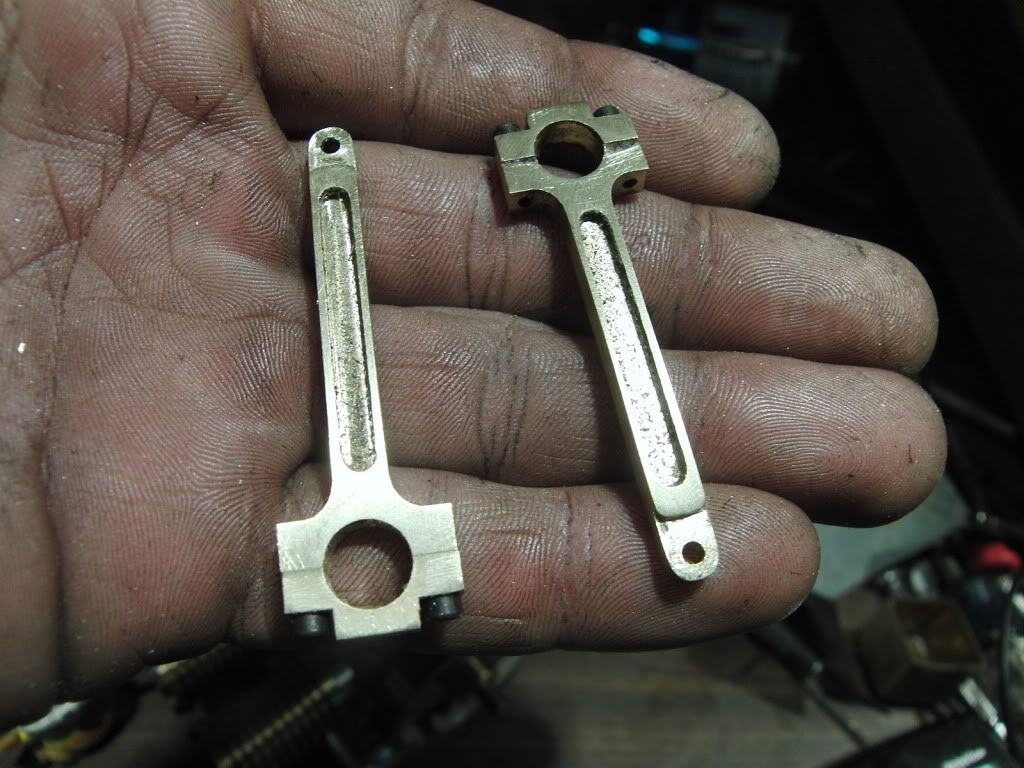
and that is how I do connecting rods.
Kel
Here are the connecting rods. I came up with a more standard design, rather than the design in the plans.
After I drilled and tapped the holes in the blank I centered it on the edge of the main bar with the cap off of it. This makes sure the center is perfectly aligned before drilling.

Then drilled the holes.




Now it is time to make the profile. I started by marking out all the lines with layout fluid. The eyeball is good enough for tis step.
The first milling step will be to mill out the recess in the middle of the rod.
I am using a 1/8" end mill for this with a .010 depth of cut 6 times across to get it 1/16" deep.

Then I proceded to mill out the sides. I am leaving a bit on the end so I can keep it parrellel in the vise when I flip it over.

Then using a 1/4 ball end mill I made the fancy radius on the cap end.


I then took the caps and milled down where the screw heads go.

and here they are after cutting the ends off.

and that is how I do connecting rods.
Kel





